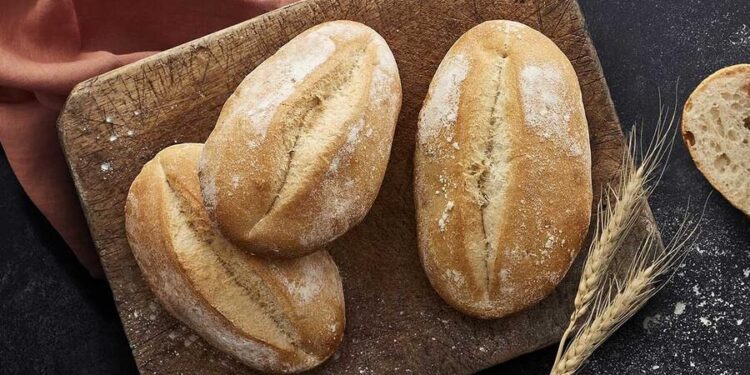Papos Secos, or Portuguese rolls, are a big deal in Portugal. They’re light and crusty, perfect for any meal or as sandwich bread. You’ll notice their oval shape and the split on top, which is made just by shaping them a bit.
With a crispy outside and soft inside, they’re great for soaking up sauces or spreading with butter and jam.
This classic recipe is simple and uses basic ingredients. Making these rolls is easy and you’ll get that fresh bakery taste right at home.
Ingredients:
- 4 cups all-purpose flour
- 1 teaspoon salt
- 1 packet (2 1/4 teaspoons) active dry yeast
- 1 1/4 cups warm water (about 110°F)
- 1 teaspoon sugar
- 2 tablespoons olive oil
Instructions:
- In a small bowl, mix the yeast and sugar with warm water.
- Let it sit for 5–10 minutes until it bubbles up.
- In a large bowl, mix the flour and salt.
- Add the yeast mix and olive oil, stirring until you have a rough dough.
- Knead the dough on a floured surface for 8–10 minutes until it’s smooth.
- You can use a stand mixer with a dough hook for about 5 minutes instead.
- Put the dough in a greased bowl, cover it with a towel, and let it rise in a warm spot for 1 to 1 and a half hours until it doubles in size.
- Punch down the dough and cut it into 8–10 equal pieces.
- Shape each piece into an oval and flatten the top a little.
- Press down the middle gently with your hand to make a slight split.
- Place the rolls on a baking sheet lined with parchment paper.
- Cover and let them rise for another 30–40 minutes until they puff up.
- Preheat your oven to 425°F.
- Bake for 15–20 minutes until they are golden brown and sound hollow when you tap the bottom.
- Let the rolls cool on a wire rack for a bit before serving.


